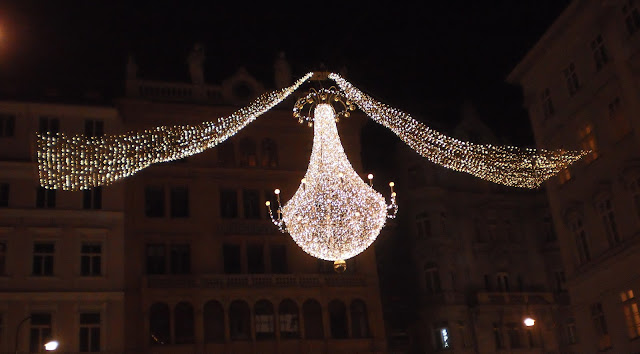Today, during my after-school German lesson, we learned about a holiday here called Krampusnacht from our teacher. She told us about this age-old tradition here in Austria and Hungary that is now more common in villages than in cities.
According to http://www.krampus.com/who-is-krampus.php , "Krampus is the dark companion of St. Nicholas, the traditional European winter gift-bringer who rewards good children each year on December 6. The kindly old Saint leaves the task of punishing bad children to a hell-bound counterpart," which is Krampus.
From this website http://www.austriantimes.at/news/Panorama/2009-12-04/18599/Krampus_and_Nikolaus_to_visit_Austria_this_weekend :
In Austria, 5 and 6 December are the Krampus and St Nicholas, or Nikolaus in German, feast days. Krampus is a mythical devil who accompanies Saint Nicholas in various regions of the world during the Christmas season. He is often portrayed as a terrifying devil carrying a huge stick or a whip with which to beat bad children.
In Alpine regions, Krampus is represented by a demon-like creature accompanying Saint Nicholas. He gives gifts to good children, while Krampus gives warnings and punishments to bad children.Traditionally, young men dress up as Krampus during the first two weeks of December, particularly on the evening of 5 December, and roam the streets frightening children and women with rusty chains and bells.
In some rural areas, the tradition also includes Krampus beating people with sticks, especially girls and young women.
Modern Krampus costumes consist of Larve (wooden masks), sheep's skin, and horns. Masks are handcrafted with great skill, and many younger adults in rural communities compete in Krampus events.
I found this recent photo of this parade in Salzburg on this website: http://www.thirdyearabroad.com/german/item/1383-krampus-run-austria.html.
I also found a YouTube clip of a Krampus parade. If you feel so inclined to watch a few seconds of it to see some costumes, you can click here.
Intriguing!


















































